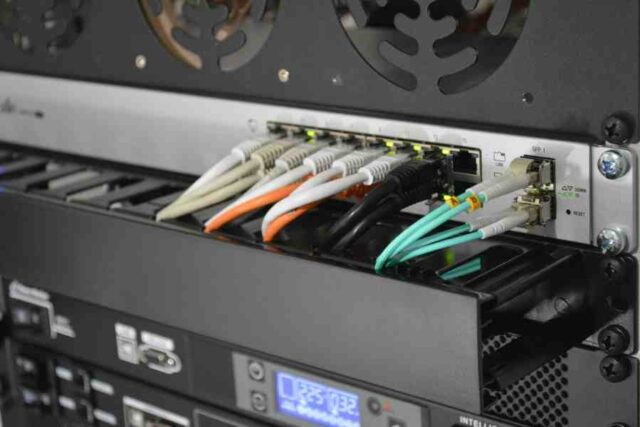In the rapidly evolving information technology landscape, data centers are pivotal in supporting the digital infrastructure that underpins our modern world. As the demand for faster processing speeds, higher storage capacities, and seamless connectivity continues to grow, data centers face the challenge of optimizing efficiency to meet these demands sustainably. Precision cooling, a technology designed to regulate and maintain optimal temperatures within data centers, is critical to this optimization. This article explores the significance of precision cooling in data centers, its impact on overall efficiency, and the advancements that have reshaped how people approach cooling solutions in the digital age.
The Importance Of Temperature Control In Data Centers
Data centers are the nerve centers of the digital age, housing vast arrays of servers, networking equipment, and storage systems. The efficient operation of these facilities is contingent upon maintaining a stable and controlled environment, with temperature regulation being a top priority. Excessive heat can degrade the performance of electronic components, reduce equipment lifespan, and even lead to catastrophic failures. Precision data center cooling addresses this challenge by providing a targeted and adaptive approach to temperature management. Unlike traditional air conditioning systems that operate on a one-size-fits-all principle, precision cooling systems are designed to deliver the right amount of cooling precisely where needed, ensuring optimal temperatures are maintained throughout the data center.
Critical Components Of Precision Cooling
- Airflow Management: One of the fundamental aspects of precision cooling is the strategic management of airflow within the data center. This involves using containment systems, such as hot and cold aisles, to segregate and direct airflow efficiently. By channeling cold air directly to the server intakes and isolating hot air exhausts, precision cooling minimizes the mixing of hot and cold air streams, enhancing overall cooling effectiveness.
- Temperature and Humidity Control: Precision cooling systems incorporate advanced sensors and control mechanisms to monitor real-time temperature and humidity levels. Automated adjustments ensure the environment remains within the optimal range for data center equipment.
- Variable Speed Fans: Traditional cooling systems often rely on fixed-speed fans, which operate constantly regardless of the cooling requirements. In contrast, precision cooling systems utilize variable-speed fans that adjust their rotational speed based on the current cooling demand. This dynamic approach enhances energy efficiency and reduces wear and tear on the cooling infrastructure.
- Liquid Cooling Solutions: Liquid cooling has emerged as a groundbreaking technology within the realm of precision cooling. Unlike air-based systems, liquid cooling solutions use a specialized fluid to absorb and transfer heat away from electronic components. This method is particularly effective in high-density data centers where traditional air cooling may struggle to keep up with the heat generated by densely packed servers.
Advancements In Precision Cooling Technologies
- Direct-to-Chip Cooling: As data centers continue to push the boundaries of computing power, the demand for more efficient cooling solutions has given rise to direct-to-chip cooling technologies. These innovations involve placing cooling mechanisms, such as liquid-cooled plates or microchannels, directly in contact with the heat-generating components on server chips. This approach provides unparalleled cooling efficiency by addressing heat at its source.
- AI-Driven Cooling Optimization: Artificial intelligence (AI) and machine learning (ML) have found applications in optimizing data center efficiency, including precision cooling. By continuously adjusting cooling parameters based on dynamic workload conditions, AI-driven systems can achieve unprecedented energy efficiency and performance levels.
- Modular Cooling Architectures: Traditional cooling systems are often designed as monolithic structures that serve the entire facility. In contrast, modular cooling architectures allow for a more flexible and scalable approach. By deploying smaller, independent cooling units, data centers can achieve a finer level of control over their cooling infrastructure, adapting to changing workloads and optimizing efficiency.
The Impact Of Precision Cooling On Energy Efficiency
Energy consumption is a critical consideration for data centers regarding operational costs and environmental sustainability. Precision cooling is pivotal in reducing energy consumption and enhancing overall efficiency. Traditional cooling systems often maintain a consistently low temperature throughout the entire data center, leading to overcooling in some areas. With its targeted approach, precision cooling minimizes overcooling by delivering the right amount of cooling precisely where it is needed. equipment.
Variable speed fans, a key component of precision cooling systems, contribute significantly to energy savings. By adjusting fan speeds based on the cooling requirements, these systems avoid the constant high-energy operation associated with traditional fixed-speed fans. This dynamic control results in energy-efficient cooling solutions that align with the real-time demands of the data center. High-density computing environments, characterized by densely packed server racks, pose a unique challenge for cooling. Precision cooling efficiently dissipates heat in such environments, especially in liquid cooling solutions. This allows data centers to accommodate higher computing densities without compromising energy efficiency or risking equipment overheating.
Challenges And Considerations In Implementing Precision Cooling
While precision cooling offers substantial benefits in terms of energy efficiency and equipment performance, its implementation is challenging. Data center operators must carefully consider several factors to maximize the effectiveness of precision cooling solutions:
- Initial Investment Costs: Precision cooling technologies often involve a higher upfront investment than traditional cooling systems. However, the long-term operational savings and increased efficiency can offset these initial costs over the data center’s lifecycle.
- Maintenance and Training: Precision cooling systems may require specialized maintenance and operational expertise. Data center staff must be trained to manage and troubleshoot these advanced cooling technologies effectively.
- Integration with Existing Infrastructure: Retrofitting precision cooling solutions into existing data center infrastructure can be complex. Compatibility with legacy systems, space constraints, and potential disruptions to ongoing operations must be carefully considered during the planning and implementation phases.
- Environmental Considerations: While precision cooling significantly improves energy efficiency within data centers, its environmental impact should also be assessed. The materials used in cooling systems and the energy sources powering the data center contribute to the overall sustainability of the facility.
Precision cooling stands out as a critical technology that addresses the challenges posed by increasing computational demands in the quest for optimizing efficiency within data centers. By providing targeted and adaptive temperature control, precision cooling systems enhance equipment performance and reliability and contribute to substantial energy savings.
The ongoing advancements in precision cooling technologies, such as direct-to-chip cooling, AI-driven optimization, and modular architectures, showcase the industry’s commitment to pushing the boundaries of efficiency. As data centers continue to evolve, the role of precision cooling will become even more pronounced, influencing the design, operation, and sustainability of these mission-critical facilities.
As data center operators navigate the complexities of implementing precision cooling, careful consideration of initial costs, ongoing maintenance, integration challenges, and environmental impact is paramount. In doing so, they can unlock the full potential of precision cooling to create data centers that are efficient, reliable, and sustainable in the long run. In a world where digital connectivity is the backbone of progress, precision cooling emerges as a cornerstone technology, ensuring that the heart of our digital infrastructure beats efficiently and sustainably.














